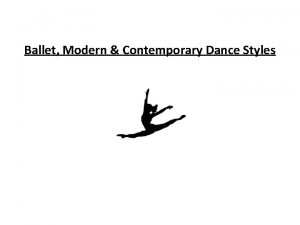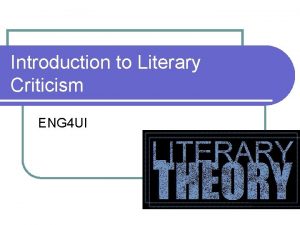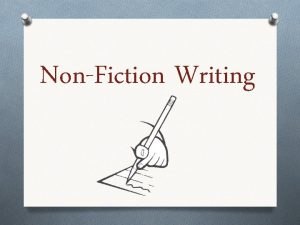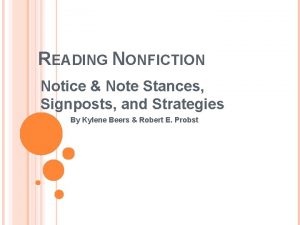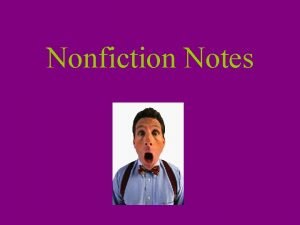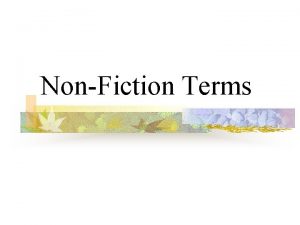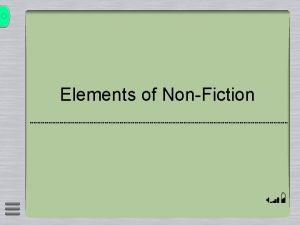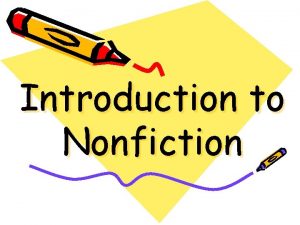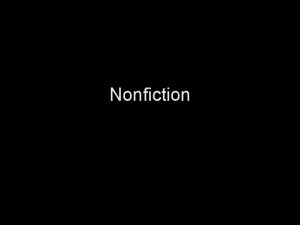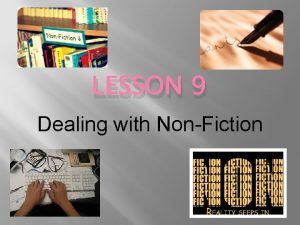Reading Nonfiction Stances Nonfiction is the group of












- Slides: 12

Reading Nonfiction Stances

Nonfiction is the group of texts in which the author makes claims or assertions to readers about the real world, real people, real experiences, ideas, or beliefs.

Fiction invites us into the writer’s imagined world; nonfiction intrudes into ours and claims to tell us something about it.

• Since nonfiction is entering into our world, it needs to be read with a questioning stance, one that reminds us to be somewhat skeptical of that person intruding into our world. • You have to evaluate the author’s claims and determine whether the author makes a strong and accurate argument.

Big Question One—What surprised me? As you read a nonfiction text, ask yourself , “What surprised me? ” • • New information “I didn’t know that. ” Suspicious information “Really? Is that true? ” Clarifying information “Oh! Now I get it!” A different perspective or way of looking at something. “I hadn’t thought of it that way. How could anyone think that way

Look at these two sentences from a book titled The Life and Times of the Honeybee. • Pilgrims brought the first honeybees to America. By the 1850 s honeybees had flown to California.

Big Question Two-What did the author think I already knew? • When you see something that is confusing or you don’t understand, ask yourself, “What did the author think I already knew? ” • What the author thought you knew usually falls into four types of problems. 1. “The author thought I’d know what this word means. ” (vocabulary) Use the context, look for definitions in the text, or look up the word.

• “The author thought I could picture this. ” (visualizing)

Sketch to help you picture something in the text. • Example—Dyson Bladeless Fan The fan appears to be a circular tube mounted on a pedestal…The air flows through a channel in the pedestal up to the tube, which is hollow. As air flows through the slits in the tube and out through the front of the fan, air behind the fan is drawn through the tube as well. This is called inducement. The flowing air pushed by the motor induces the air behind the fan to follow. Air surrounding the edges of the fan will also begin to flow in the direction of the breeze. This process is called entrainment.

You try it. Read this introduction to Vietnam’s Declaration of Independence from France. • With the support of rich and poor peasants, workers, businessmen, landlords, students, and intellectuals, the Viet Minh [people fighting for independence] had expanded throughout northern Vietnam where it established new local governments, redistributed some lands, and opened warehouses to alleviate the hunger. • First, underline any parts that are confusing. Next, sketch out what you see happening. Finally, label your drawing using words from the text.

3. “The author thought I’d know something about this. ” (prior knowledge. ) In math and science, the topic almost always will have been covered in a previous section of the book. If you are reading an article, look back through the article to see if you can find information that will help you. Try to use context clues. 4. “The author thought I’d get how this happens. ” (sequencing or causal relationships. Reread and look for signal words that help you think about sequencing or cause and effect.

Big Question Three-What challenged, changed, or confirmed what I already knew? 1. 2. We read nonfiction to learn something. 3. • • • We can change in several ways. We can: Learning is more than memorizing; it involves changing the way we think about an issue or an idea. Confirm what we already thought Modify our thinking Change our minds completely
 Ballet arm positions
Ballet arm positions The most common critical stances for literature
The most common critical stances for literature While reading activities
While reading activities Nonfiction reading strategies
Nonfiction reading strategies Nonfiction reading test black friday
Nonfiction reading test black friday Hình ảnh bộ gõ cơ thể búng tay
Hình ảnh bộ gõ cơ thể búng tay Lp html
Lp html Bổ thể
Bổ thể Tỉ lệ cơ thể trẻ em
Tỉ lệ cơ thể trẻ em Voi kéo gỗ như thế nào
Voi kéo gỗ như thế nào Chụp tư thế worms-breton
Chụp tư thế worms-breton Bài hát chúa yêu trần thế alleluia
Bài hát chúa yêu trần thế alleluia Các môn thể thao bắt đầu bằng tiếng nhảy
Các môn thể thao bắt đầu bằng tiếng nhảy
